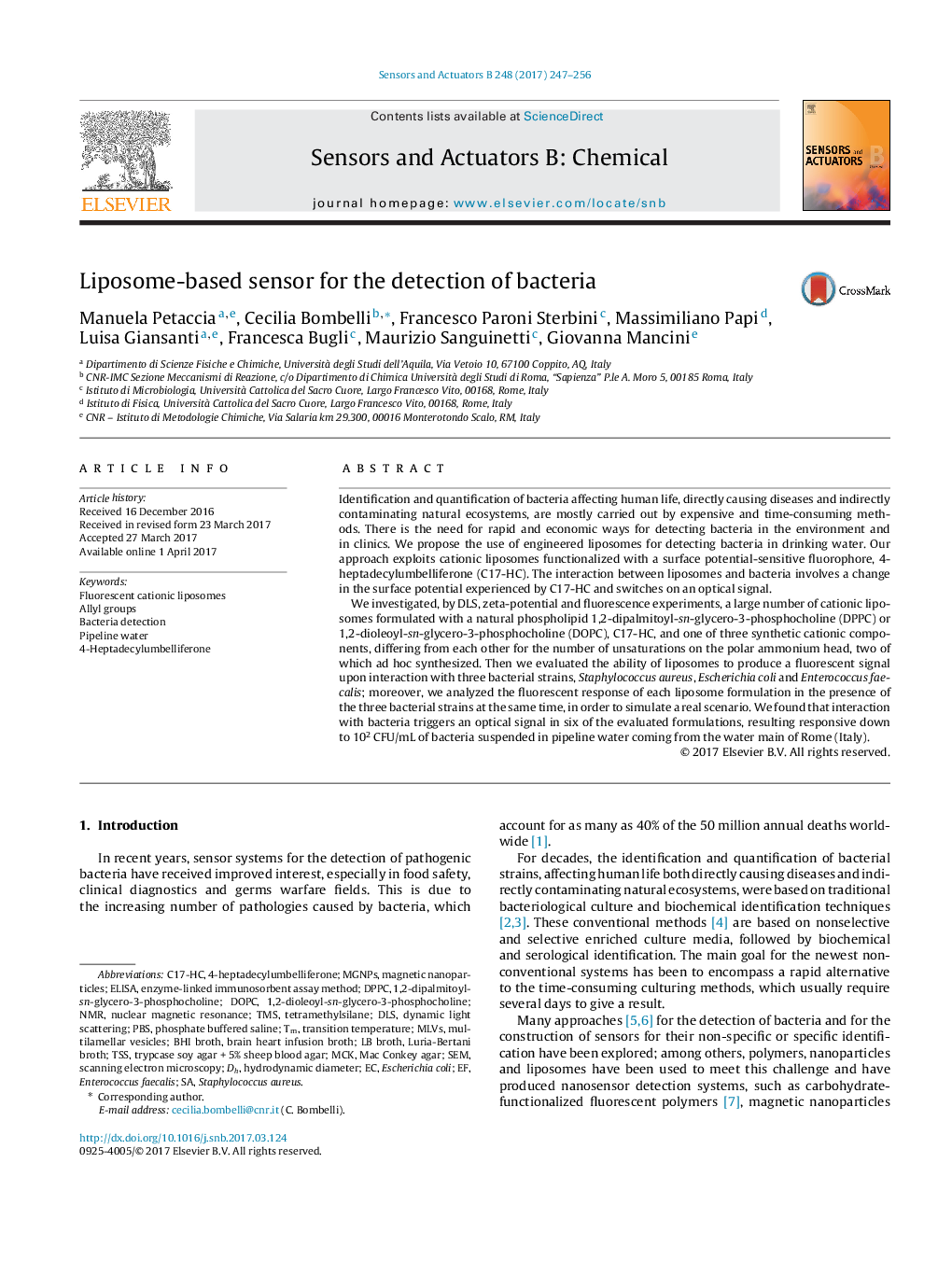| کد مقاله | کد نشریه | سال انتشار | مقاله انگلیسی | نسخه تمام متن |
|---|---|---|---|---|
| 5009177 | 1462043 | 2017 | 10 صفحه PDF | دانلود رایگان |
- A liposome-based fluorescent system for detection of bacteria in water is proposed.
- Different mixed liposome formulations were investigated.
- Variations of zeta-potential upon the interaction with bacteria were also studied.
- The liposome membrane organization controls the fluorescent response of the system.
- Aspecific liposome/bacteria interactions can be exploited for differential sensing.
Identification and quantification of bacteria affecting human life, directly causing diseases and indirectly contaminating natural ecosystems, are mostly carried out by expensive and time-consuming methods. There is the need for rapid and economic ways for detecting bacteria in the environment and in clinics. We propose the use of engineered liposomes for detecting bacteria in drinking water. Our approach exploits cationic liposomes functionalized with a surface potential-sensitive fluorophore, 4-heptadecylumbelliferone (C17-HC). The interaction between liposomes and bacteria involves a change in the surface potential experienced by C17-HC and switches on an optical signal.We investigated, by DLS, zeta-potential and fluorescence experiments, a large number of cationic liposomes formulated with a natural phospholipid 1,2-dipalmitoyl-sn-glycero-3-phosphocholine (DPPC) or 1,2-dioleoyl-sn-glycero-3-phosphocholine (DOPC), C17-HC, and one of three synthetic cationic components, differing from each other for the number of unsaturations on the polar ammonium head, two of which ad hoc synthesized. Then we evaluated the ability of liposomes to produce a fluorescent signal upon interaction with three bacterial strains, Staphylococcus aureus, Escherichia coli and Enterococcus faecalis; moreover, we analyzed the fluorescent response of each liposome formulation in the presence of the three bacterial strains at the same time, in order to simulate a real scenario. We found that interaction with bacteria triggers an optical signal in six of the evaluated formulations, resulting responsive down to 102Â CFU/mL of bacteria suspended in pipeline water coming from the water main of Rome (Italy).
122
Journal: Sensors and Actuators B: Chemical - Volume 248, September 2017, Pages 247-256
